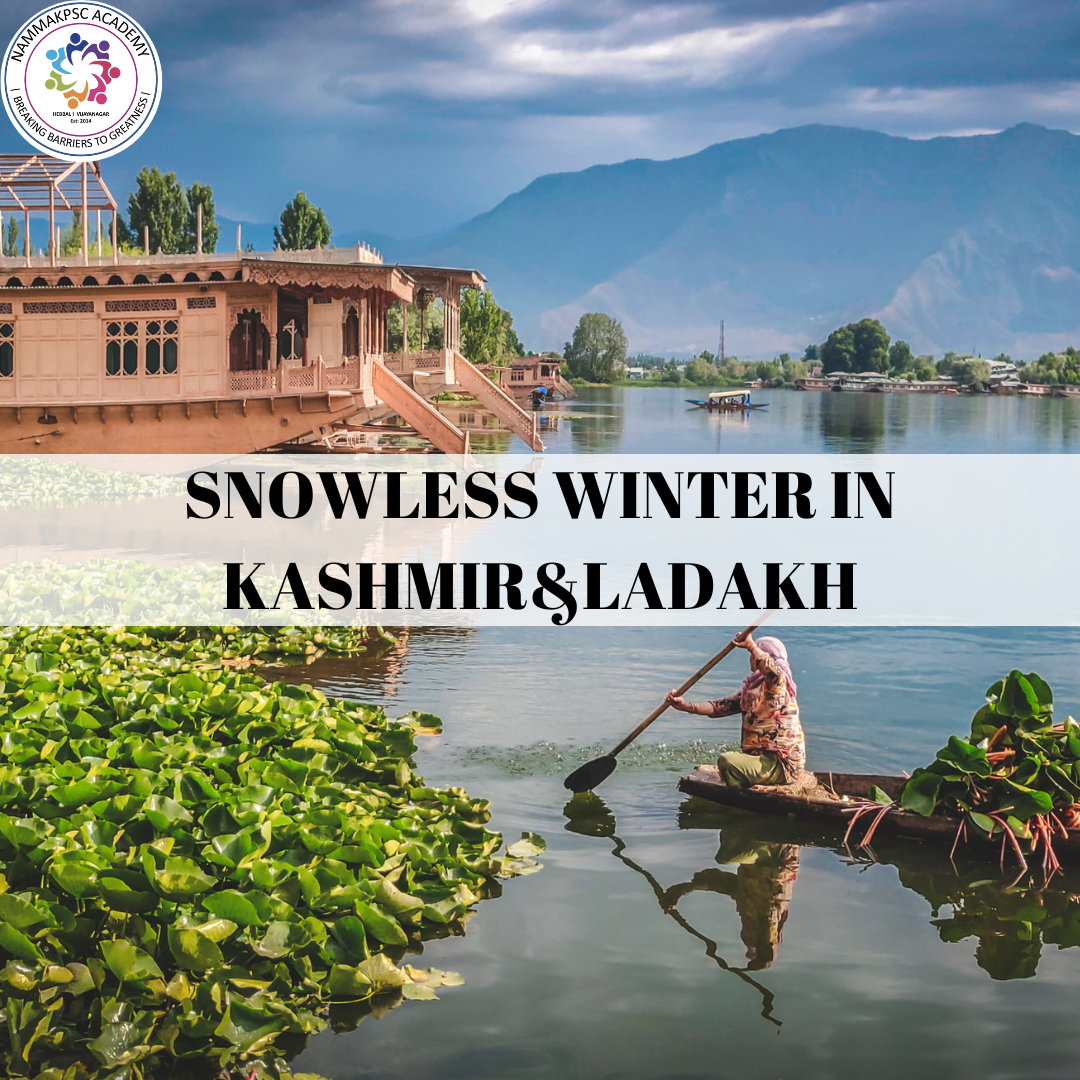Published on: January 16, 2024

SNOWLESS WINTER IN KASHMIR&LADAKH
SNOWLESS WINTER IN KASHMIR&LADAKH

CONTEXT
Snowfall in Kashmir, however, is much more than just a tourist attraction. It is crucial for the local climate, winter crops and horticulture, availability of waters in streams and rivers, and for the local economy
Dry winter
- Though the lack of snow is the most visible in Gulmarg, a major tourist destination during this time of the year, the whole of Jammu and Kashmir and Ladakh have remained largely without rains or snow this winter.
- Winter precipitation in Jammu and Kashmir, as also Ladakh, is mainly in the form of snowfall. Normally, the region gets its first snowfall in the first half of December, and then through most of January. But it has been mostly dry this season. Jammu and Kashmir saw 80 per cent rainfall deficit in December, and 100 per cent (absolutely no rain) deficit in January so far, India Meteorological Department (IMD) data show. Ladakh has had no precipitation at all in December or January
- While snowfall in the region has been showing a declining trend in recent years, this season is remarkable.
- The overall decreasing trend of snowfall has been attributed to a decline in western disturbance events and gradual rise in temperatures, which invloves the role of climate change. The prevailing El Nino event in the eastern Pacific Ocean might be the additional factor to account for this year, scientists say
Western Disturbances
- Winter precipitation in the Himalayan region is caused mainly by Western Disturbances. These are large eastward-moving rain-bearing wind systems that originate beyond Afghanistan and Iran, picking up moisture from as far as the Mediterranean Sea and even the Atlantic Ocean.
- Western Disturbances are the primary source of rainfall over north and northwest India during the post-monsoon and winter months. Along with the south-west monsoon season that runs from June to September, and the north-east monsoon that brings rains to Tamil Nadu and some other regions, Western Disturbances are the third major contributors to India’s annual rainfall.
- During winters, about four to six western disturbance events happen every month on an average. This season there was one feeble western disturbance event in December that did not bring any rains, and another similar one in January
- Several recent studies have captured this declining trend. One of them noted that the mean frequency of strong and extreme Western Disturbances, ones that definitely result in rainfall or snowfall, had declined as much as 43 per cent in recent years
El Nino impact
- There have been several years in the last one decade — 2022, 2018, 2015 — when winters have been relatively dry in Jammu and Kashmir, and snowfall has been very low
- Absence of El Nino, some years had seen very less snowfall
- Climate change has a role to play here. Many of our studies point in that direction
Repercussions
Long-term implications
- Generation of less hydroelectricity
- Increase in the rate of glacier melting
- Adverse impact on the drinking water supply
- Very little recharge of groundwater
Short term
- Increase in forest fires
- Agricultural drought
- Drop in crop production
- Lead to an early spring – early flowering – reduction in yield
- Yields of apples or saffron, important ingredients of local economy, are badly affected

